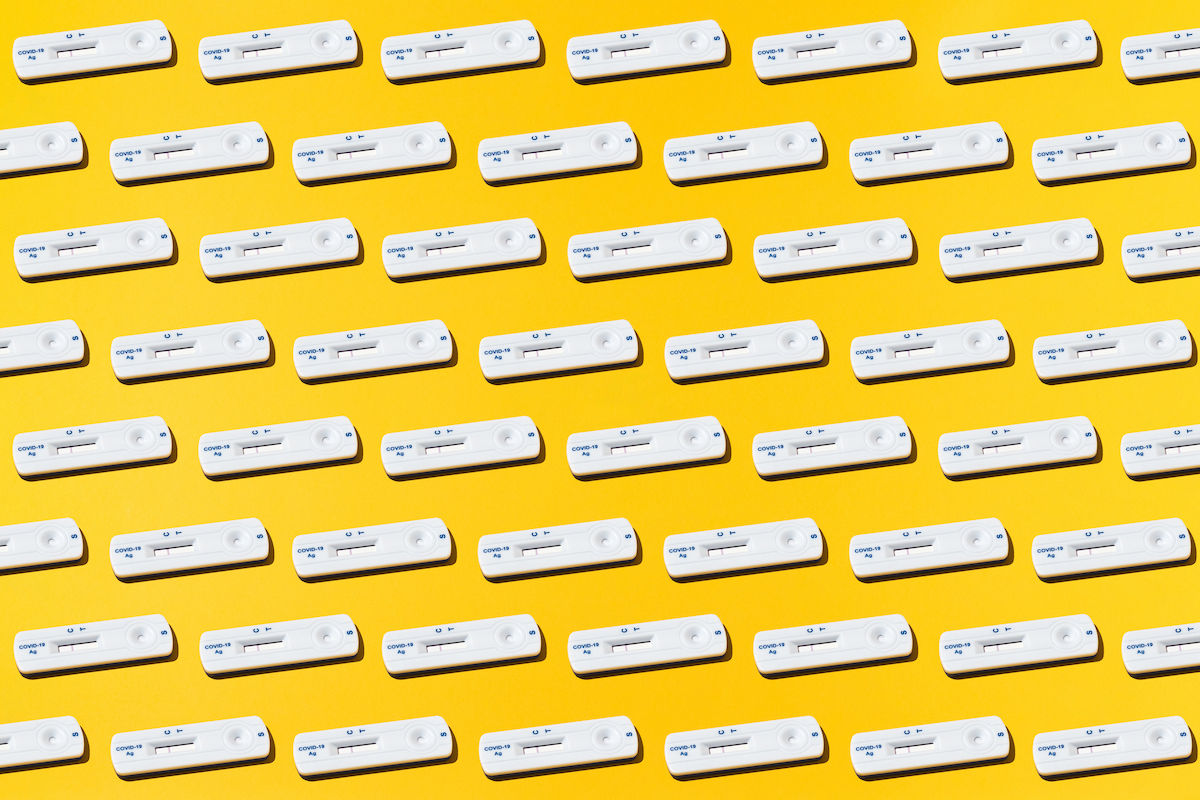However: we are still seeing significant and, in some cases, confusing quarantines. For example, last week a father wrote to me with the following story. His child had been in contact with another child, and the other child had a positive rapid test for COVID-19. His child was, therefore, home as a close contact. Shortly after, the other child had a negative PCR test, suggesting that, as can happen, the rapid test was a false positive. But his child still had to quarantine for the full period. There was no way to test out of it, and no way to adjust for the reality that the other child did not have COVID.
This is a particularly bizarre example, but the fact is, we are doing a huge amount of quarantining based on contact tracing in school. In L.A., over this current school year, more than 30,000 students and staff have been in quarantine. School-based quarantines are a problem for students, who miss school, and for their parents, who may have to miss work. There is speculation that some parents have been unwilling to re-enter the labor force as a result of the unpredictability of school.
School-based quarantine is not a good idea. It is disruptive without having any public health benefit. We know this from data, from randomized studies. It simply does not make sense to continue to do it.
Here I want to go through the two pieces of data that led me to this conclusion (which I am not alone in; see, e.g., the Wall Street Journal earlier this week). I then want to address what I think is a major issue — that schools are lacking concrete guidance about what to do — and provide a simple approach.
A note: The entire discussion focuses on the decision to quarantine close contacts. This is different from the choice to isolate students or teachers with a positive test (which generally does make sense). What I’m talking about here is what to do if a child is a close contact of another child who tested positive.
Evidence: In quarantine conversions and test-to-stay
The downsides to quarantining students and teachers are clear. Missed school is a significant issue for students, their families, and their teachers. This is especially true as many teachers and students work to catch up from missed school over the past school year. Given the obvious downsides, quarantine should be used only if (a) there is a significant benefit in terms of preventing spread and (b) there is no equally good alternative that is less disruptive.
In a sense, the burden of proof should be on the quarantine to show that it works to improve public health. I do not think it meets this burden.
The first piece of evidence comes simply from the fact that spread in schools is very limited. This is something we knew, eventually, from data last year. A paper based on data from New York, for example, showed that among 36,000 people quarantined for being close contacts, only 191 ended up with COVID. In 78% of the cases, they identified an adult as the index contact, implying that in the current school year — with high adult vaccination rates — these numbers should be even smaller. And although there were concerns that the delta variant would be different, that does not seem to have come to pass.
Our data isn’t perfect (WHY NOT?! I yell to the skies as usual), but we do have some information from this school year. In mid-September, Los Angeles County reported that it had quarantined nearly 30,000 people and saw only 63 positive tests; this corresponds to an infection rate of 2 in 1,000 for close contacts. CNN reported some anecdotal data from Georgia, which also showed very low rates.
It’s worth digging into what these numbers mean. Let’s imagine that L.A. County hadn’t quarantined those 30,000 people and instead let them go to school as usual. And imagine that the 63 people had been in school with COVID-19. In the data from L.A., it appears that each person has an average of about 3 close contacts. So that means that those 63 people would have been expected to have about 190 total close contacts. Given the close-contact infection rate, we’d expect about 0.4 new infections.
Bottom line: 30,000 people underwent a 10-day quarantine in order to prevent a half a person from being infected with COVID-19. This does not seem like a good trade-off.
However: people may disagree with my conclusion. Maybe this seems like an OK trade-off, depending on how you weight things. It seems like a much worse trade-off, though, when we introduce the possibility of test-to-stay.
“Test-to-stay” refers to a protocol in which, instead of quarantine, students can go to school but engage in regular (daily or every other day) rapid testing. The idea is that if they get sick, these tests will pick up even pre-symptomatic high viral loads, and students will not spread the virus. Even if we could pull out half of those 63 cases in L.A. County, we’re now down to 0.2 resulting infections. And half is probably an understatement, and the tests will pull out a larger share of actually infectious cases.
A number of places in the U.S. are using protocols like this — Massachusetts, for example, which also helpfully reports an estimate of the number of school days saved by this program (48,547 as of last week). L.A. County, after seeing those numbers, moved to a version of it (calling it “modified quarantine” for some reason). Ohio was doing this way back last year.
One reason we think it works is that we can see it working. But also, we have gold-standard randomized-trial evidence from the U.K. This paper, in The Lancet, shows that infection rates in schools were similar in those that used a quarantine and those that used test-to-stay. A note is that their estimates are fairly imprecise. This is because, overall, conversions are limited. Test-to-stay is as good as quarantine, but very few people get COVID from this situation, so there is a limit to how much better it could be.
Apparently the CDC is considering changing its protocol. I found this quote, from an article in CNN:
In an email to CNN, CDC said it views test-to-stay as a “promising practice” and said it’s “working with multiple jurisdictions implementing test to stay to evaluate the effectiveness of this strategy.” But it’s not clear when that test-to-stay guidance could be available.
I find this … infuriating. What evidence are they waiting for? A randomized trial? Many places that are doing it effectively? We have that. I have no idea what they are waiting for. And the waiting isn’t free! Not everyone listens to the CDC guidance anymore, but some places do. It is well past time for the agency to take a stronger stand.
A note on preschool and child care
This discussion focuses on K-12 schools, but the extension to preschool and child care is also clear. For all of the same reasons, it does not make sense to quarantine close contacts in those settings. Test-to-stay programs could be used as well, or simply added vigilance, given the expectation of low overall spread.
A protocol
I started with the quarantine story from the dad above. Obviously that is not a good protocol. So what is a good one?
Step 1: Identifying a case
There is a lot of variation in how schools are doing case identification. It ranges from testing only symptomatic kids to various forms of surveillance testing (PCR, pooled, rapid tests, etc.). I do not have much to add to this, other than to say that having testing available is broadly good and that rapid tests are wonderful, but ultimate case identification should also involve a PCR or at least a second rapid test. Rapid tests can show false positives (not common, but not unheard of).
Current guidance proposes an isolation of 10 days for a COVID case. We probably need better data as to whether this is too long (probably yes), but that’s not for today.
Step 2: Close-contact procedures
Having identified a case, the question is what to do with close contacts.
I think the first steps are clear.
- Per CDC guidance, vaccinated individuals should not need to quarantine for a close contact.
- Unvaccinated close contacts should be allowed to remain at school and should be encouraged to pay attention to any symptoms that could be indicative of COVID-19.
Beyond this, reasonable districts will choose different paths. A less conservative approach is to do no additional testing. A very conservative approach would be to do daily testing among close contacts through 7 days post-exposure. An intermediate step is, say, twice-a-week testing for close contacts.
Addendum: Who is a close contact?
Last year, I talked with a school superintendent who was struggling with excessive quarantine and with his students, who were devastated to miss school activities. He told me he had students measuring the space between their desk and another desk, trying to argue that it was, in fact, far enough that they shouldn’t have to miss their last football game.
This makes it clear that when being a close contact means a two-week quarantine, it matters a lot how you define it. This is especially taxing for districts that are supposed to do elaborate contact tracing. The CDC has a fairly complicated procedure, in which close-contact status in schools depends on masking and is different from close-contact status outside of school.
When being a close contact only means a little extra testing or vigilance, how we define it is less weighty. In this case, it may be feasible to eliminate contact tracing and to define close contacts as simply classroom exposures.
This change is also important as we move to a post-vaccine world and start talking about the possibility of removing masks in places where they have been ubiquitous. Fewer masks means more people are close contacts; but in a world without quarantine, this may not necessarily mean more disruptions.
A final word
There are many steps toward a return to normalcy, at schools and elsewhere. As we inch closer to vaccines for kids, we are likely to start seeing a push to drop masks, to drop testing, to simply return to the way it was before. There is disagreement on these questions, and we should have that discussion. But there is slightly less urgency, since masking and testing are not keeping kids out of school.
Quarantines do not make sense, and they result in significant missed school with no public health benefit. It is time to end them.
Community Guidelines














